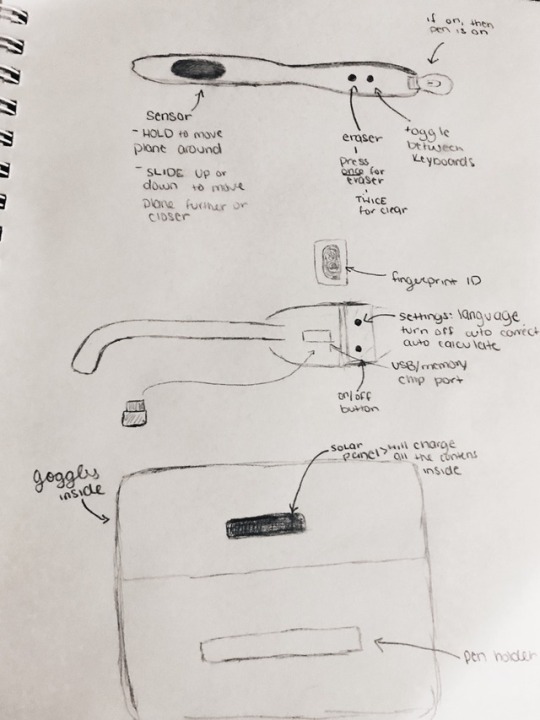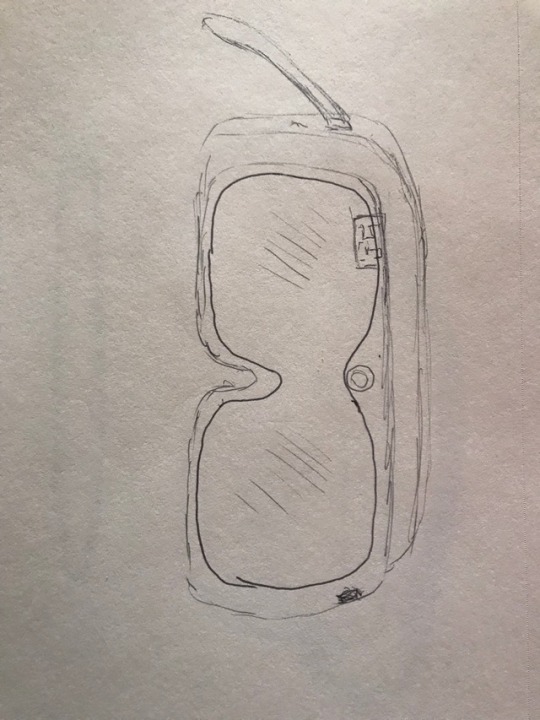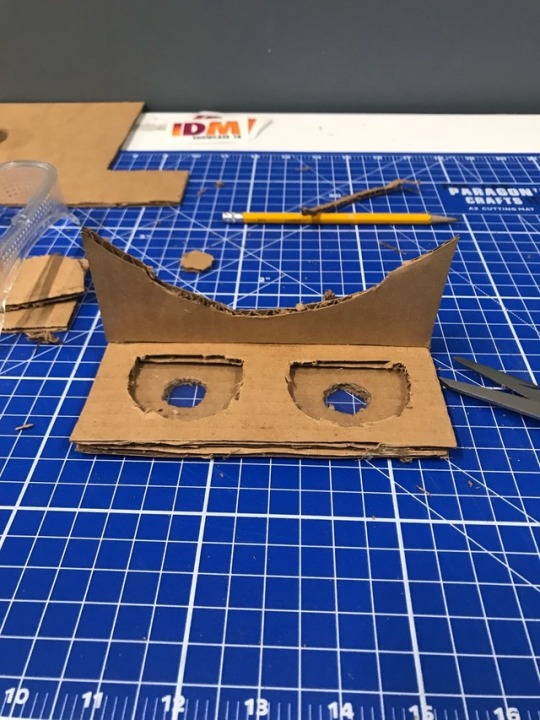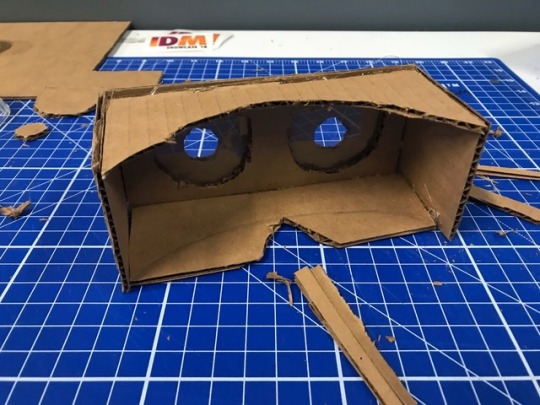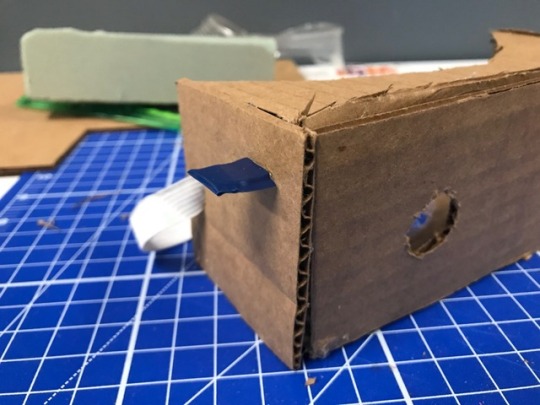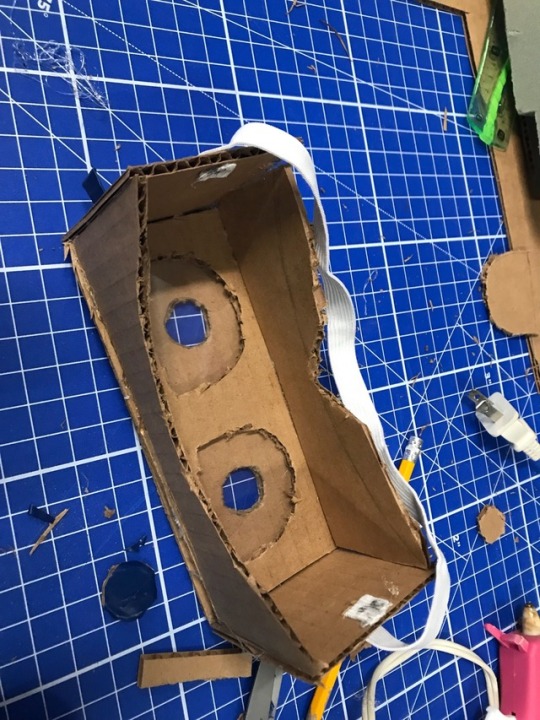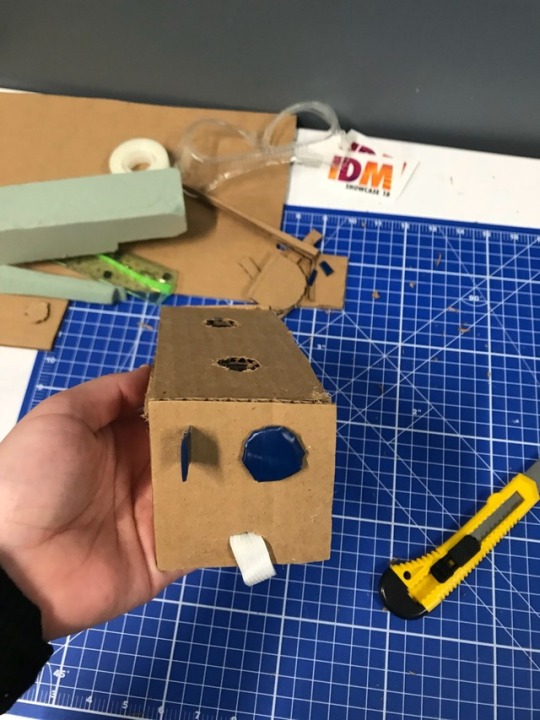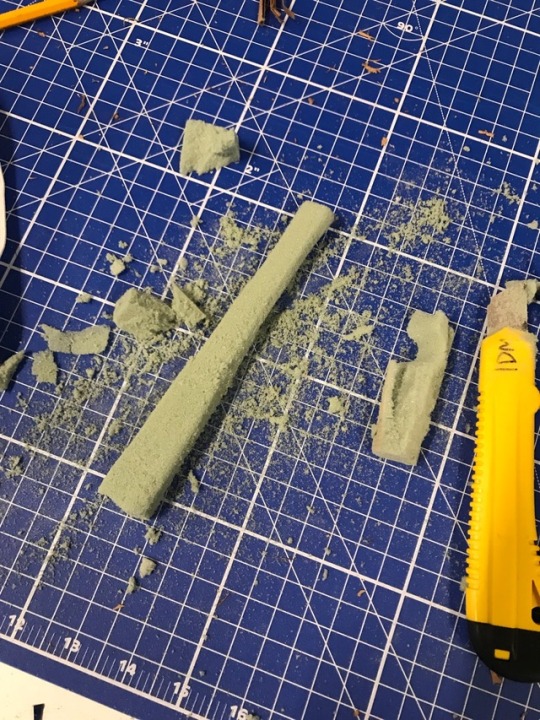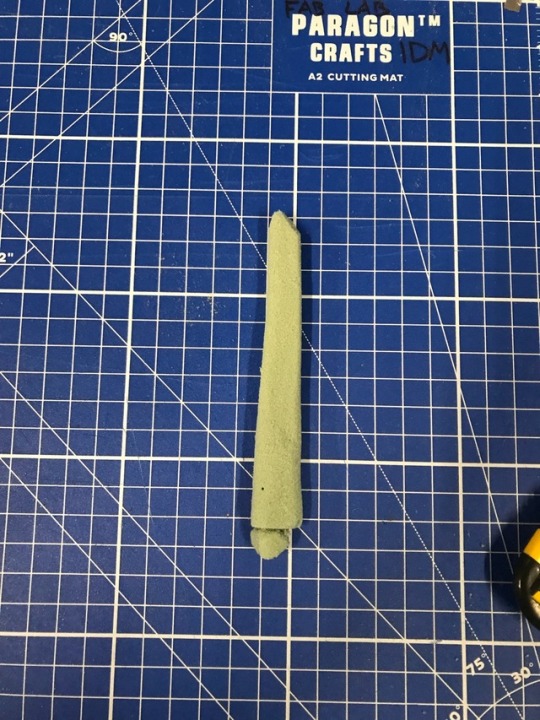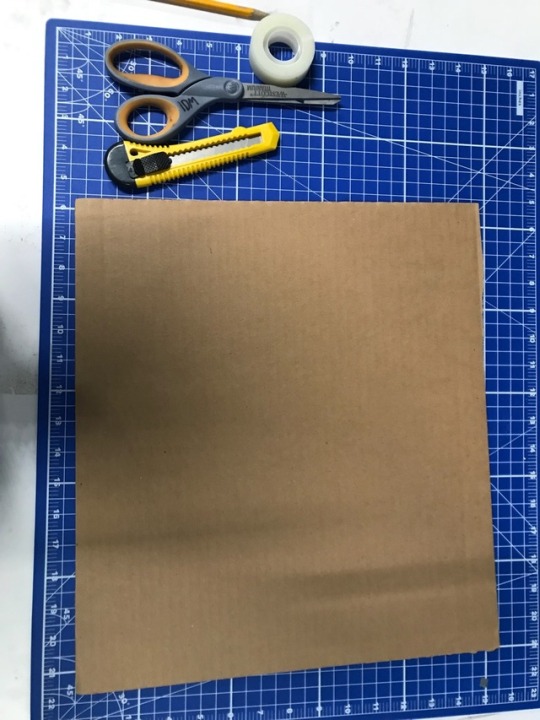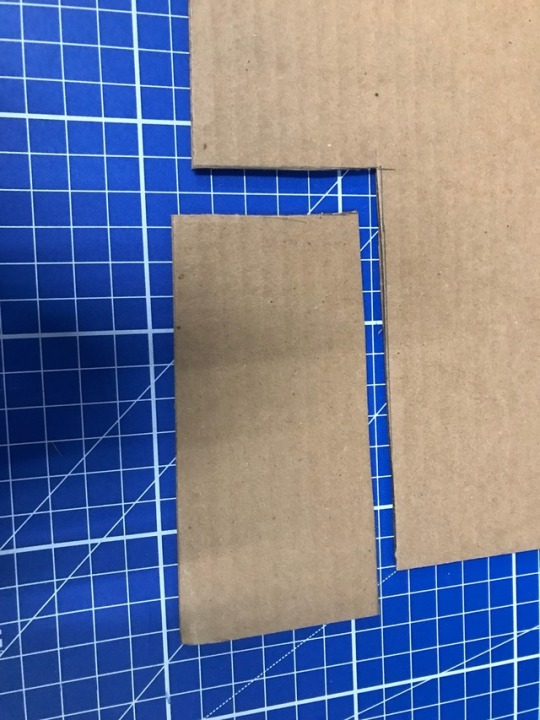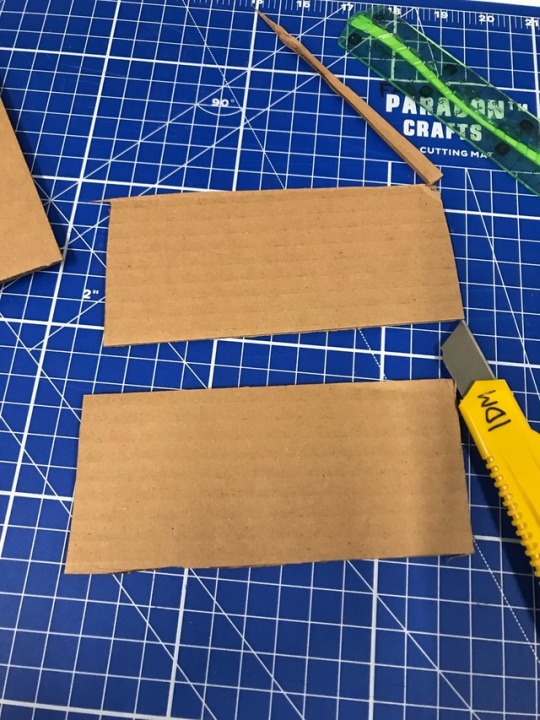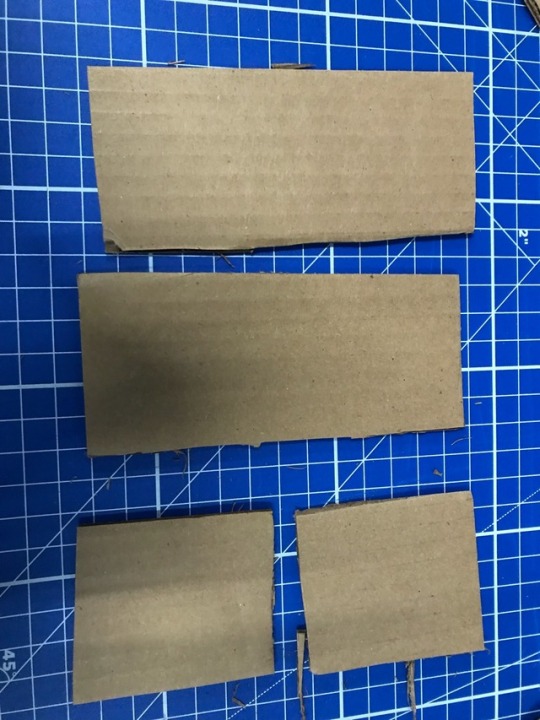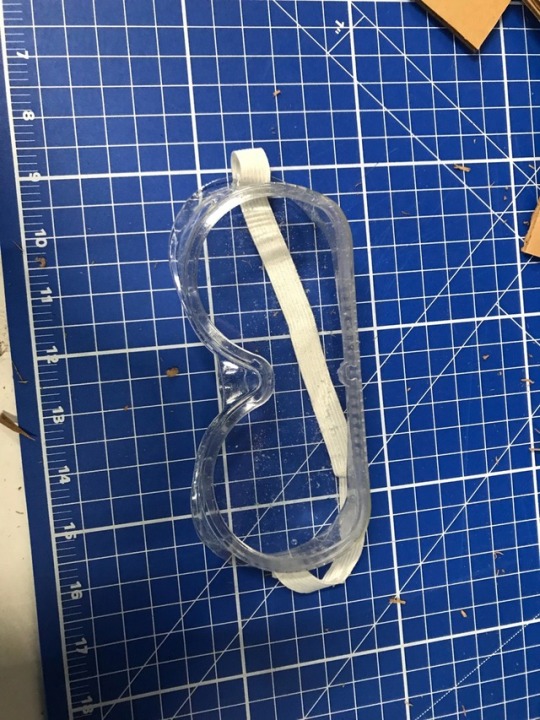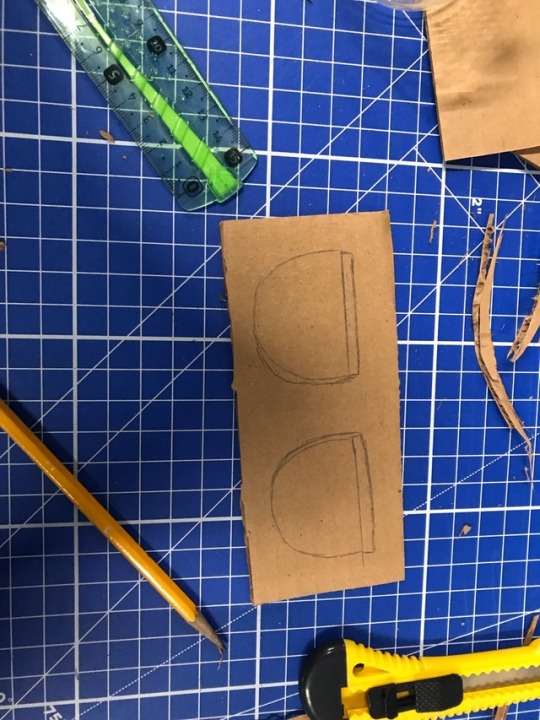Text
Speculative Design
Final Project Documentation (In chronological order)
Card Sorting Technique
Inspiration
Framing Story
First Prototype
Second Prototype
The Story
Third Prototype
Third Prototype (continued)
Third Prototype (continued part 2)
Potential Prototype Design
Frequently Asked Questions
High Resolution Prototype Design
High Resolution Prototype + Process
Final Prototype Advertisement
0 notes
Text
Input Post | May 3
Yesterday, I went to the Whitney Museum of American Art. And one of the exhibitions that really caught my attention was Harold Edgerton’s Flash. He was able to capture so many beautiful moments through photgraphy that they eye is unable to. One of my favorites was The Atomic Bomb
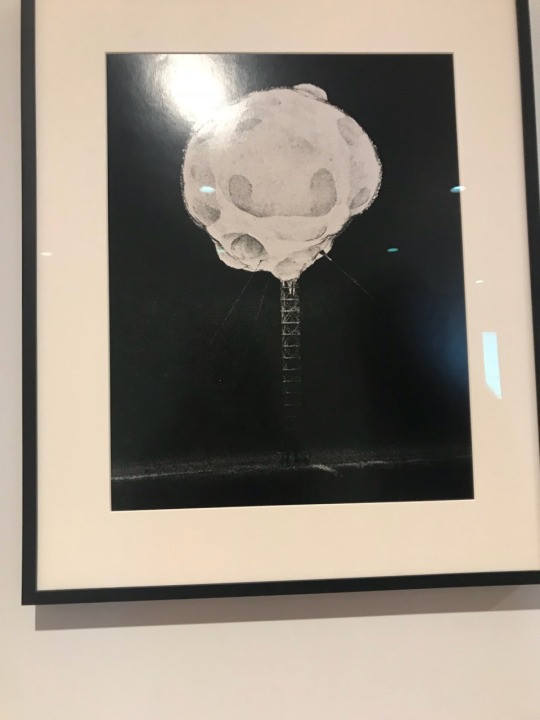
Another one was Milk Drop.


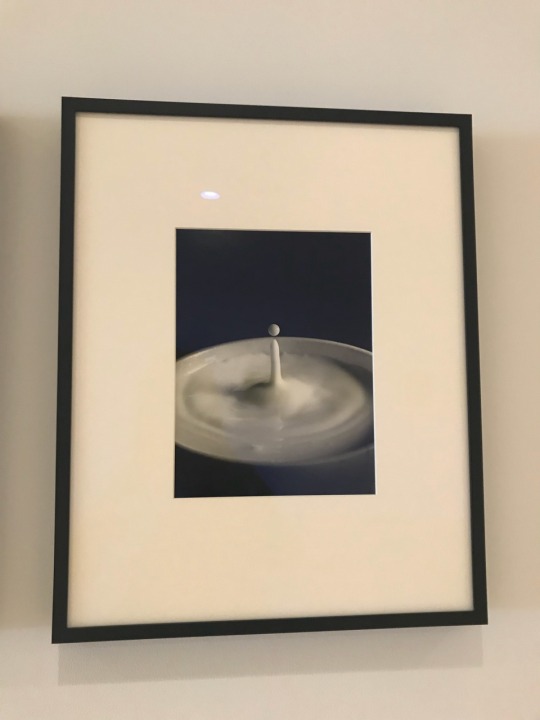
There is no doubt that Edgerton is a pioneer when it comes to photography. Not only because he invented Flash photography, but his techniques involved with multiple exposure were unseen and quite magnificent.
This is my final input post. But it doesn’t mean it is my final input. If I have learned anything from posting my inputs of the week to this blog throughout this semester it is that I am constantly getting creative inputs from everywhere and everyone. From people, shows, movies, art, locations, music, and all of my surroundings. These inputs are what make my work the way it is and it wouldn’t be the same without them.
0 notes
Text
Inputs of the Week | April 26
It just dawned on me that there are only two classes left of Ideation and Prototyping. So for this week’s input post I have decided to take you day by day explaining the inputs I received throughout this week.
Friday
Let’s start where we left off since last class. On Friday, most of my input actually came from my Ideation and Prototyping classmates. They asked some really great questions and generally gave really good feedback (as usual).
Saturday
On Saturday, I am going to be honest, I did not leave my house. I watched shows and movies pretty much the entire day. However, I did watch Black Mirror’s ‘White Christmas’ episode and loved it. It might be my favorite one so far.
Sunday
On Sunday, I decided I would document my entire process of this week for this class.
Monday
Today I went to the Whitney Museum of American Art only to find out that they were closing in 4 minutes. I will try again on Friday.
Tuesday
I spent approximately 3 hours filming and making my speculative design high resolution and the rest doing research for a ‘motion pictures’ presentation for another class. As I researched this, I realized how every film that is ever made influences the next one. From hand-tinting film strips to technicolor to chroma key. As well as from intertitles or title cards, to subtitles, to dubbing voices in different languages. Every film had some form of impact on the rest of the industry.
Wednesday
On Wednesday, the strangest thing happened. I was waiting at the bus stop and as the bus started approaching, a lady appeared from behind a tree and started running to the stop. However, as she is running, the bus gets stopped at a traffic light and when she turns around and sees this, she casually walks back behind the tree (where there was nothing and no one). When the traffic light became green and the bus started approaching the stop again, the same lady comes running from behind the tree as if she was running late to catch the bus. That’s when I realized. We are living a simulation. I told my cousin this story and she said that perhaps the lady’s only purpose is to act as if she’s running late to catch the bus or perhaps she is only programmed to run to the bus stop while the bus is approaching it. And I started thinking how she reminded me of a Sim, from the Sims game, which led to my next thought. The Sims = SIMULATION. I thought I had made a grand discovery that no one else had realized but when I looked it up I noticed that in its description it literally says ‘The Sims is a life simulation game.’ So I was pretty disappointed in myself.
Thursday
Today, I have felt really inspired. I just finished editing my creative process video that I will be showing the class tomorrow and I realized how much I actually enjoyed filming and editing it. Perhaps I will make more videos showcasing my creative process of making things, not just physical applications, but every project I create.
2 notes
·
View notes
Text
Museum of the Future | Response
How will design change the future? I think it is interesting the way this article puts things into perspective as Chaika mentions how if you see something, even a prototype, of a possible future technology, you will be less surprised when the real technology appears.
“If you see facial recognition technology at the Museum of Future Government Services, for example, then you might not be so shocked when it actually shows up in airport security.”
This is interesting because although many of us fear technology taking over in the future and the whole idea of us heavily relying on it, but if designers introduce this idea as ‘a possible future’ people will not be as afraid when it does happen. This is actually a great marketing strategy. People can present really advanced ideas in ‘museums of the future’ and once it becomes popular, people will be more willing to purchase it. It also acts as hope in the less advanced regions. It shows how advanced technology can and will get to create solutions for the third world countries.
0 notes
Text
Airpen | FAQ
How do you identify if someone is writing versus not?
There will be an invisible plane present that is controlled by the sensor. If you slide up the sensor, the plane will move closer to you, if you slide it down, the plane will move further from you. If you hold down the sensor on a certain position it will grab the plane, allowing you to move it and change its direction (XY, XZ, or YZ).
How does the pen know whether you are writing numbers or letters?
The top button on the pen will toggle between keyboards. Default: alphabet, first click: numbers, second click: free-hand, third click: returns to alphabet.
What if I want to write words in a different language?
Although the location of this ‘future’ is in the United States where the primary language is English, users will still have the option to switch languages. However since it is not very common for people to write in multiple languages within the same sentence, it will not be as easy to toggle between languages as it is to toggle keyboards. The top button on the right side of the Airgoggles will access the settings in which you can change the language you are writing in as well as remove auto-correct and auto-calculate features.
Does the pen write 3 dimensionally?
No, the pen writes in 2D. The point is to resemble a traditional pen as much as possible in addition to adding smart technology.
How do you delete something you have written?
The button directly underneath the keyboard button is the ‘eraser.’ When you press this button once, the tip of the pen will turn into a digital eraser. When you press it twice in a row it will clear the canvas.
Where are your notes stored?
The pen will work with USBs which will act as the ‘notebooks’ of the future. All of your notes will automatically be added into the USB that is currently in the Airgoggles and will be organized into folders by date. However, if you took notes and left them on the plane and your Airgoggles turn off, those notes will remain there until you actively clear it. For educational purposes, each USB can be used for a different subject, and you can purchase another one at any time.
How do you access your notes?
In order to access your notes, you may insert the USB into a laptop or computer.
How can I share my notes with others?
We understand that collaboration is essential to creating a productive and effective learning environment. Because of this, if a peer wants to share his notes with you they can scan their finger on your Airgoggles. This grants you permission and access to their notes. It will continue to be shared with you until they actively turn off their device (not turned off on its own).
How is are these devices powered?
The Airpen and Airgoggles are powered strictly by solar energy that is transferred while these contents are inside of the Aircase.
How many USBs can you own?
As many as you want. However, only 4 fit in the Aircase at a time excluding the one that is already inside of the Airgoggles.
0 notes
Photo
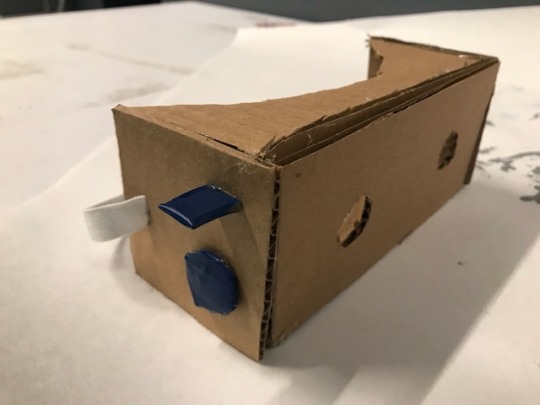
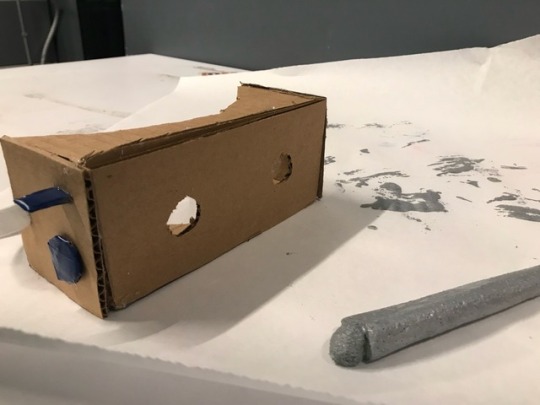
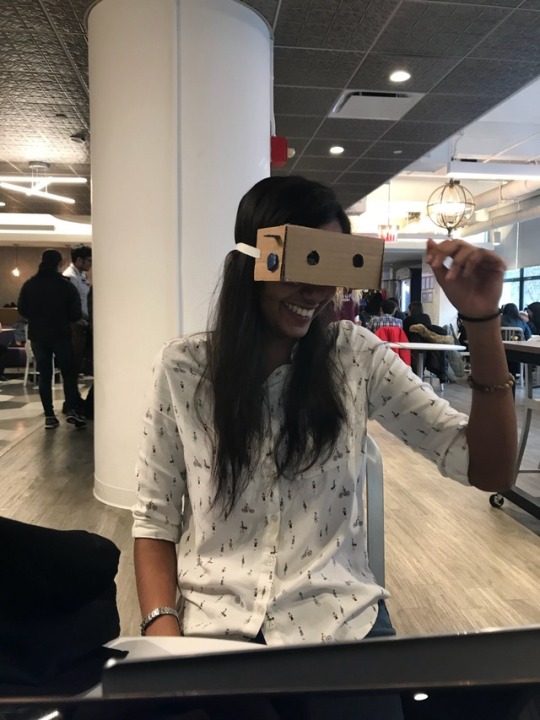
For this prototype I changed quite a lot of things. Originally I was going to make it out of green foam, but that material broke apart very quickly so I used it to make the pen instead. As for the goggles, it kind of replicates VR goggles, except it’s not closed on the back end as it is meant to be AR. Although I changed it from temples to a band, I think I’m going to go back to temples because these glasses should be something students can easily remove, unlike safety goggles. I also moved the memory chip to the side of the goggles and added a button which is meant to represent the on/off button
0 notes
Text
Airpen: The Story
It is 2075 and there are roughly 1000 trees left in the United States with a population of 500 million Americans. The population is promptly becoming unsustainable and the carbon dioxide in the country is rapidly intensifying. The government quickly decides to take action and passes a bill which bans the destruction of rain forests and cutting down of trees (effective immediately). This means all of the paper and wood that has been created in the country are the only ones remaining and will not be further produced. Immediately, people begin to purchase all of the paper/notebooks/textbooks from shelves. They begin to collect letters, mail, all of the paper they have ever used as it is now significantly more valuable. However, after a few months, individuals have switched to documenting everything digitally (through their laptop, phone, other digital devices), teachers noticed that students have been distracted while using those devices to take notes in class and even cheating during exams by looking up answers online while taking them. Because of this, the government releases a new product, the Airpen, and mandates that everybody own one, and students in primary and secondary schools, must use this for note-taking and exams, unless indicated by the teacher. Ultimately, the instantaneous access to information that students get through this pen makes them rely heavily on its technology and does not allow them to formulate their own thoughts. Because of this, the future youth of the United States grow up to be very reliant on the Airpen to the point of a very lazy, fruitless, and unintelligent society.
0 notes
Text
Input Post | April 17
Today I went to a NYU Career Development event where a guest speaker, Marvin Yves Thomas (NYU Alumni), came to speak about his experiences since college to his current state. But before I get into that, I will explain how I have been feeling lately. For the most part, I have felt pretty unmotivated in terms of my chosen major of Integrated Digital Media for a variety of reasons. For one, the thought that I am not good enough has been pondering in my head quite a lot. I go to all these different events where other digital media students have created amazing projects in VR or web development or graphic design, things I cannot even think to create. These projects have so much substance and value to them and the work that students put into it shows. On the other hand, I feel like my projects and works are not as creative or detail oriented as I wish they were. I tend to give up on things halfway and begin to slack on them which makes me feel like I do not belong in such a creative field. Moreover, although I love all the digital media fields I am highly passionate about filmmaking and I begin to think “well why am I in IDM and not majoring in film?” In addition I have felt like IDM is a very risky major as it is not very commonly known and thus explaining it to employers is a bit of a challenging task. Specially when you are attending such a highly acclaimed university that is not only prestigious but also expensive, it begins to feel like you are wasting a very valuable degree on something that could potentially fail.
With that said, in today’s seminar, Marvin spoke about his experience at NYU and how he took many risks careerwise to pursue something he loves. Although having majored in finance in NYU, he ended up dropping everything to study art and filmmaking in Brazil. He did it to follow a passion of his and gained so much cultural experience and self-awareness off of this risk. Now he is a very successful brand manager who clearly loves his job. I really hope to be able to take this person’s experience and input it into my own thoughts. It reminds me of the project we had to do on studying someone else from the class and representing them. For that project I had to get to know Maria who has had such a great share of experiences from taking risks, but she has clearly grown a lot from it. I hope to be as courageous as both of these individuals and just follow my passion without fear.
0 notes
Photo
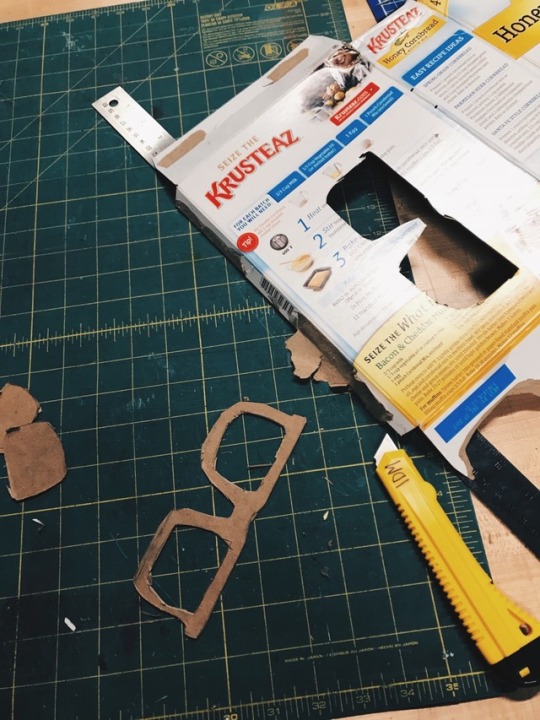
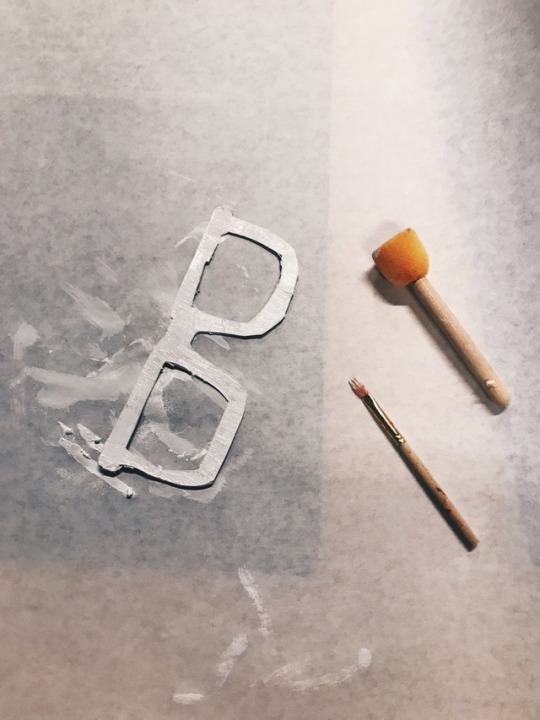
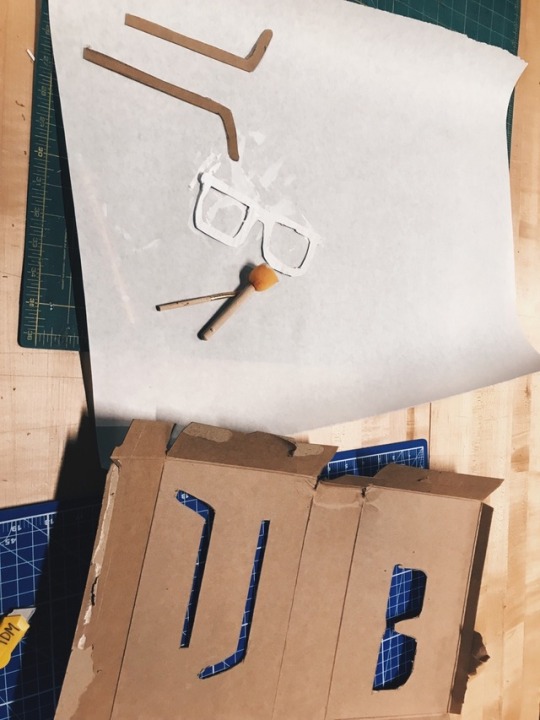
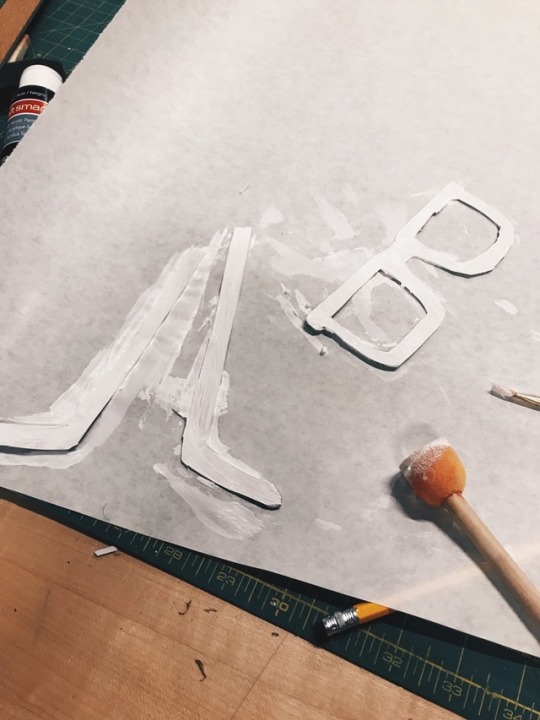
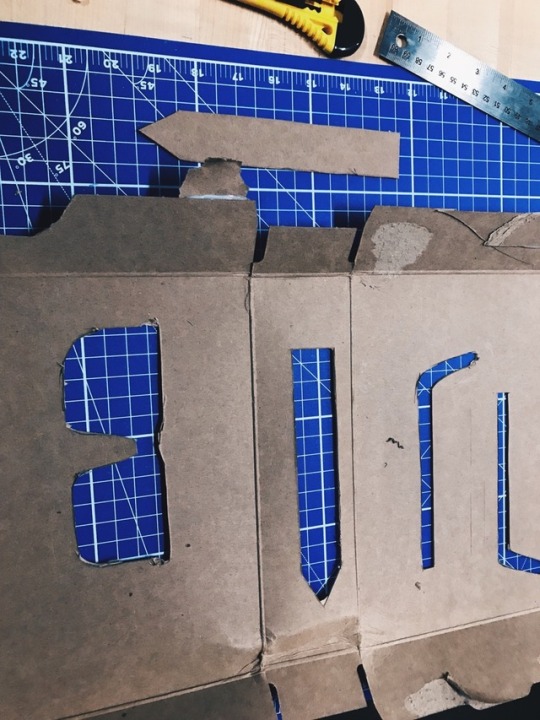
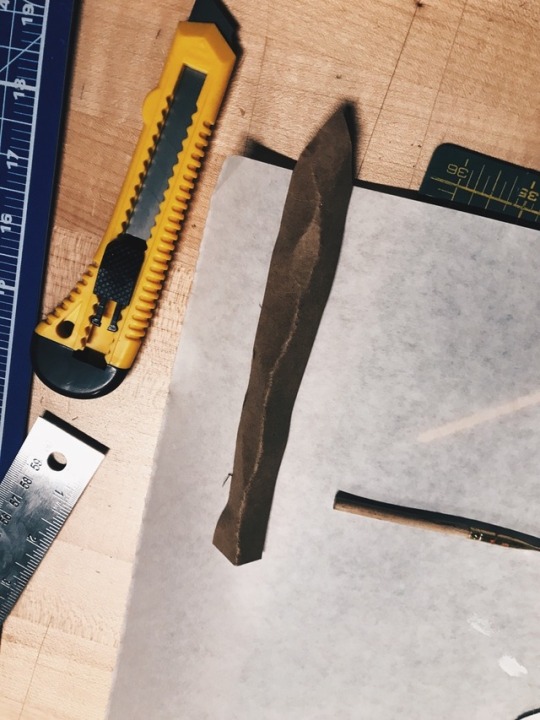
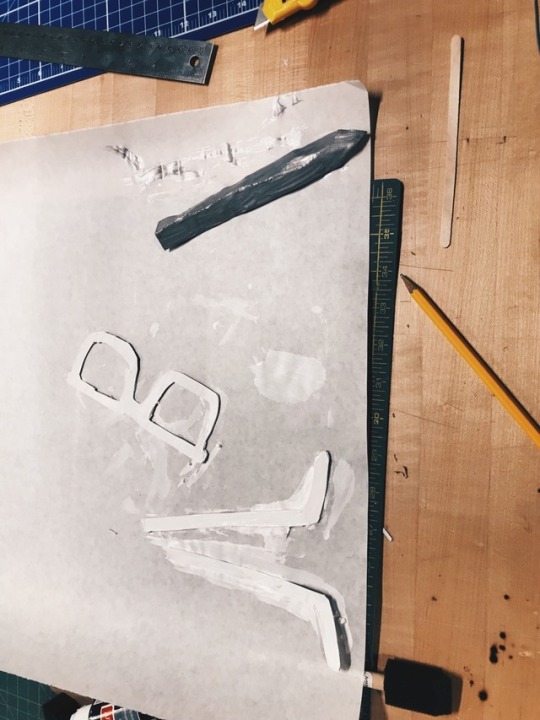
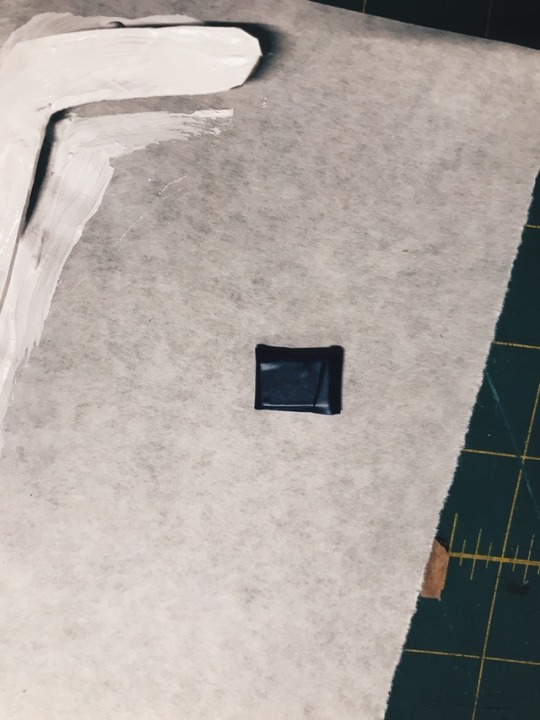

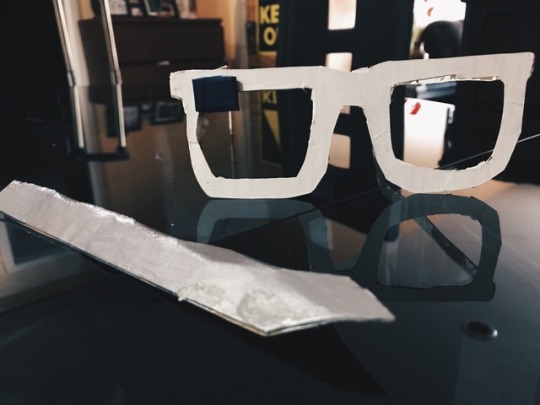
While building this second prototype, I tried to focus a little bit more on the user’s experience wearing it. For the first prototype I built two different goggles and neither of the seemed to fit on a persons face. The first ones side parts was too short, and the second one didn’t hold on to the nose. Because of that when I tried to get feedback last week, it was kind of hard to receive it since my classmates couldn’t even wear it. This time around I carefully measured the distance from the front of my face to the back of my ears to ensure that they would stay on while also measuring the size of my nose for the middle of the frames to hang to my face. In addition to the fit, I also placed a chip on the right frame which would act as the memory chip. It would be where all of the user’s data is stored as well as their learning ability data. It would also be where the external sources (textbooks, API’s, databases, information) is in. Basically, that chip would serve as the central processing unit of the entire system.
0 notes
Text
Input Post | April 12
This week I accidentally ended up watching a TED talk by Kirby Ferguson, the creator of the ‘Everything is a Remix’ video that we watched in class earlier this semester. Halfway through the TED talk I realized that this man was pointing out very similar references to that video and after looking him up, I discovered that it was indeed the maker. While I was watching this, I found myself once again agreeing with a lot of the things he pointed out except at one point where I just had to disagree. He points out the question of what if scrollbars, pop-up menus, and folder icons had been patented when they were released in the 80s. And he points this out with the intent of showing us how copyrights and patents only limit creators considering that these different software interactions are pretty much what all electronic devices use today. But prior to this question he states that Apple had patented the ‘slide to unlock’ function. However, at this point I am not convinced because what this shows me is that not patenting something gives access for others to use it and ultimately limits innovation. For example, Xerox not patenting these software resulted in every single computer and website using these functions of scrolls bars, pop-up menus, and folder icons. These newer developers and engineers still continue to use these basic and very common software functions today, because they do not have the need to innovate and come up with new ones since these work efficiently and are accessible to them. However, looking back at the case with Apple’s patent, the limitation of not being able to use the slide to unlock function forces competitors to come up with new and innovative ways to unlock phones. From this we developed different unlocking functions: tapping a sensor on the back of the phone, Touch ID, dot unlock, face recognition, etc. To conclude, perhaps limiting what creators can use (through the use of copyrighting and patenting) actually furthers innovation by forcing competitors to come up with new unseen products.
0 notes
Photo

This was the first version of a prototype for my speculative design
0 notes
